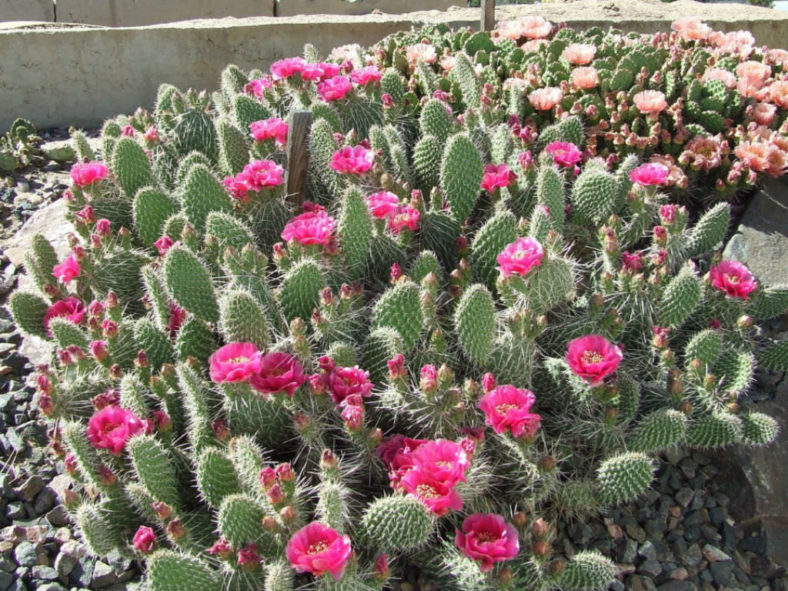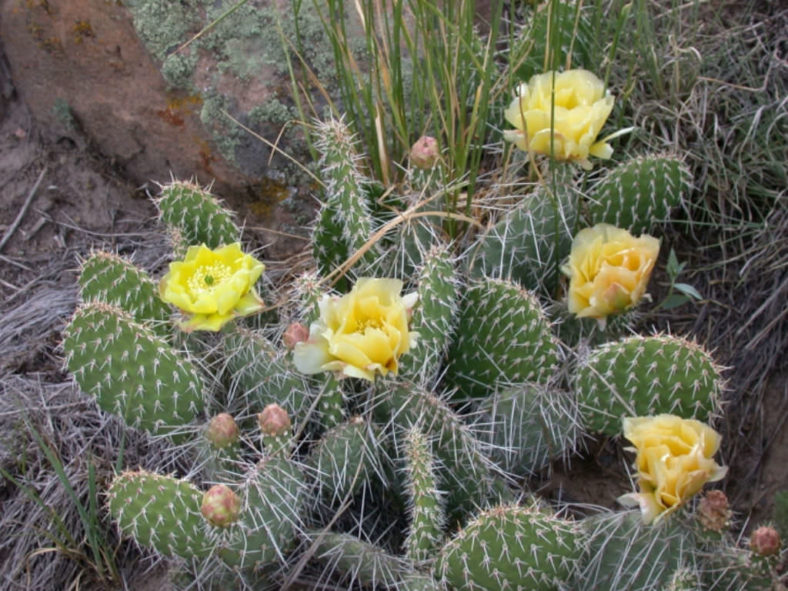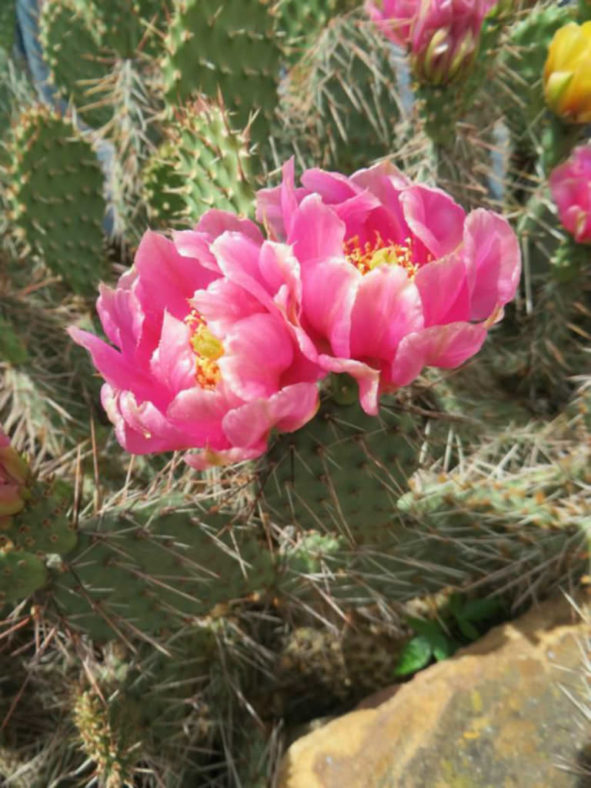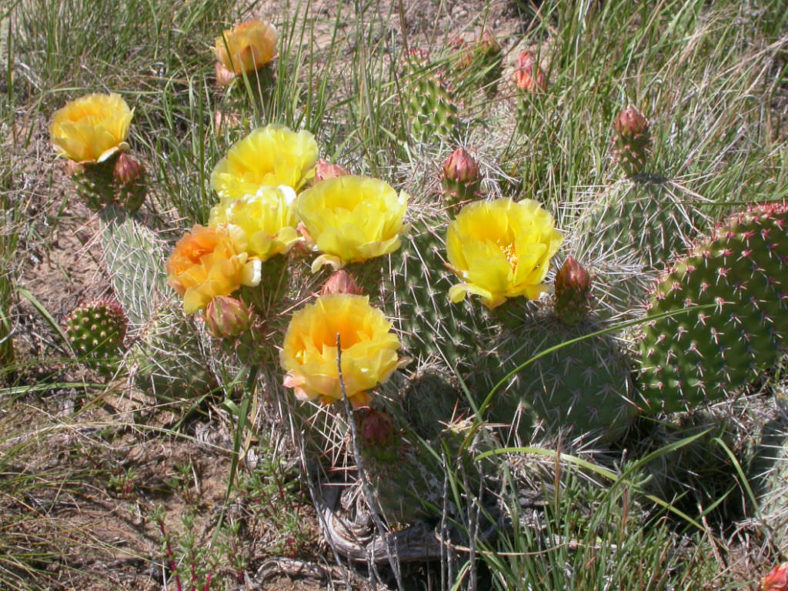Scientific Name
Opuntia polyacantha Haw.
Common Name(s)
El Paso Prickly Pear, Grizzly-bear Prickly Pear, Hair-spine Cactus, Hairy Prickly Pear, Navajo Bridge Prickly Pear, Panhandle Prickly Pear, Plains Prickly Pear, Starvation Prickly Pear
Synonym(s)
Opuntia polyacantha var. polyacantha, Tunas polyacantha
Scientific Classification
Family: Cactaceae
Subfamily: Opuntioideae
Tribe: Opuntieae
Genus: Opuntia
Origin
Opuntia polyacantha is native to North America. It is widespread in western Canada, the Great Plains, the west and the central United States, and Chihuahua in northern Mexico.
Description
Opuntia polyacantha is a shrubby cactus with oval, green, spiny pads growing one atop the other. It can grow up to 16 inches (40 cm) tall and 10 feet (3 m) wide. The pads can reach up to 10 inches (25 cm) in length and up to 7 inches (17.5 cm) in width. The areoles are tipped with woolly brown fibers and glochids. Many of the areoles bear spines that vary in size and shape.
The flowers are yellow to magenta and appear in early summer. They can reach up to 1.6 inches (4 cm) in diameter. The fruits are cylindrical, brownish, and have short, stout spines.

Hardiness
USDA hardiness zones 3b to 9b: from −40 °F (−40 °C) to 30 °F (−1.1 °C).
How to Grow and Care
Though the large variety of species within the Opuntia genus means different Prickly Pears may need slightly different care. All are desert cacti that need lots of sun, light, and very little water. So, if you live in a hot, arid area, these plants can generally be planted outside, left alone, and enjoyed.
These cacti will grow just fine in a garden but can also be grown in pots. To repot, ensure the soil is dry, remove the pot, and remove the old soil. After treating any cuts with fungicide, place the cactus in a new pot and backfill it with potting soil. As with a new cutting, ensure not to water a newly repotting Prickly Pear briefly to avoid rotting its roots.
Opuntia can propagate either by cuttings or by seed. To propagate by cuttings, sever pads from a plant and let them dry to heal the wounds. Then, place the plants in dry soil and refrain from watering them until they begin to grow to avoid rotting them.
Learn more at How to Grow and Care for Opuntia.
Links
- Back to genus Opuntia
- Succupedia: Browse succulents by Scientific Name, Common Name, Genus, Family, USDA Hardiness Zone, Origin, or cacti by Genus
Photo Gallery
Click on a photo to see a larger version.


